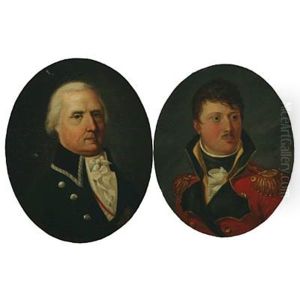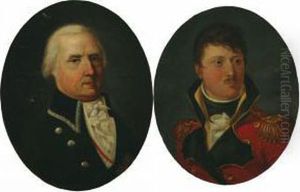Hans Ditlev Frantz Von Linstow Paintings
Hans Ditlev Franciscus von Linstow was a prominent Norwegian-Danish architect, best known for his role in designing the Royal Palace in Oslo, Norway. Born on April 4, 1787, in Hørsholm, Denmark, Linstow's early years were influenced by his noble background, which opened doors to the best educational opportunities of his time. He embarked on his architectural studies in Copenhagen, which were foundational in shaping his future career. Linstow's work is often celebrated for its neoclassical style, reflecting the architectural trends of the early 19th century.
In 1818, Linstow moved to Norway, where he would leave a lasting legacy. His most significant commission came in 1824 when he was appointed as the architect for the Royal Palace in Oslo, a project that would cement his reputation. Linstow's vision for the palace was grand and influenced by classical architecture, yet he was also mindful of integrating it into the surrounding landscape, showcasing his innovative approach to design. Beyond the Royal Palace, Linstow contributed to the urban planning of Oslo, including proposals for the layout of the surrounding streets and parks, which demonstrate his versatility and foresight as an architect.
Linstow's contributions were not limited to royal and public buildings; he also designed a variety of structures, including private residences and churches, further showcasing his adaptability and mastery of different architectural forms. His work on the Royal Palace, however, remains the pinnacle of his career, reflecting the ideals of neoclassicism and the aspirations of the young Norwegian state.
Linstow's impact on Norwegian architecture is undeniable, with his designs continuing to be celebrated for their elegance and historical significance. He passed away on June 10, 1851, in Oslo, but his architectural legacy lives on, not only in the buildings he created but also in his influence on subsequent generations of architects. Linstow's work remains a testament to the enduring appeal of neoclassical architecture and his pivotal role in shaping the architectural landscape of Norway.

